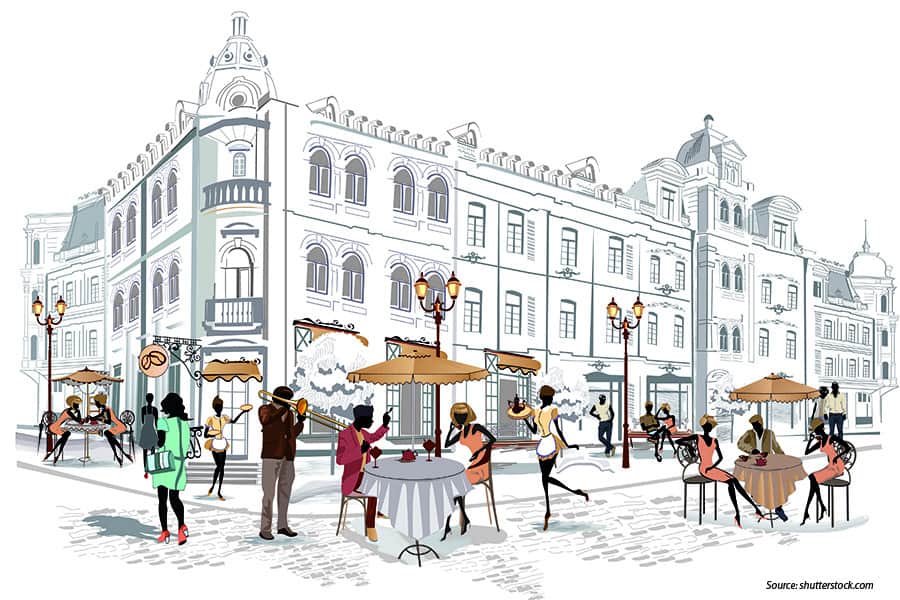
From ‘location, location, location’, it’s now ‘people, people, people’ and meeting their needs 24/7. People have a 24/7 approach towards life, and they are demanding spaces where they can live, work, shop and play whenever, wherever and whichever way they want. Therein lies the significance of mixed-use developments. A mixed-use development is traditionally defined as multi-use, multi-purpose building that physically and functionally provides space to integrate commercial, residential, cultural, institutional and industrial uses.
“Mixed-use developments are certainly on the rise,” confirmed Milen Gentchev, global operations director for Ingka Centres. “Our first mixed-use city centre concept in China – developed around living, working, shopping and having fun in the same space – will open this year in Changsha. The development will house the LIVAT mega mall, IKEA store, IKEA-inspired apartments and office units along with cafés, reading areas, gyms and social spaces.” Ingka Centres is investing €7.3 billion to transform the business, upgrade the portfolio of 44 centres in 14 countries, while entering new markets like India and China.
In the UAE, Dubai-based developer Meraas is developing a similar mixed-use concept around its retail destination City Walk. The Dubai Hills project developed by Emaar is on similar lines. In Kuwait too, a massive mixed-use project is in the making in Kuwait City by Salhia Real Estate Company and developed by Assima Real Estate. The 4.1 million sqft Assima Project comprises a mall, office tower and high-end executive hotel apartments. Retail, thus, must be used as a catalyst to develop a dynamic district, combining the components of ‘live, work, shop, play’, as the line between these activities is steadily blurring. What’s new is the acceleration of this trend like never seen before.
“The boundaries between work, play and live are indeed getting interlinked,” agreed Lara Marrero, principal & strategy director for global design and architecture firm Gensler. “That’s why we have to create lifestyle destinations that are interlinked. In doing so, the purpose of the place is the critical path. Another critical element while planning any space is time, which is a fixed variable. Online has hacked this time component very well by bringing consumers the option to buy whatever they want, whenever they want. Our Gensler Experience Index indicated that 49% of the time, the key consideration is time; thus, the rise in online shopping. But the other 51% constitutes discovery, aspiration, social and entertainment – something that you can’t always find online. So, while planning a space look at how you can create a following.”
People are looking for frictionless places to do their grocery shopping, go to the gym, have lunch and get back to work and meetings. Thus, town square, experience-driven spaces that can blend in with the adjoining communities tend to work better. Case in point: US-based well-being and hospitality brand Equinox has a few centres within Westfield shopping centres.
“The idea is to create an environment where people will want to stay longer. These days’ they are demanding the convenience of shopping and working out under the same roof. As partners, Westfield understands this need to attract more footfall,” said Danielle Larsen, vice president – international acquisitions for Equinox – which has collaborated with Alshaya Group to create similar experiences in the Middle East and Africa region.
Staying with wellness, Julie Vilet, director of UR Lab & CSR for Unibail Rodamco-Westfield said, “Wellness is a growing category in our destinations, occupying almost 13% space. F&B also plays a prominent role, a segment that has been growing steadily at 10% in our developments. Entertainment is evolving too, offering more immersive content. Overall, the development of new frontiers and new activities must be created by understanding what’s important for visitors. It could even be urban farming and other such human activities.”
One of the most significant advantages of such mixed-use spaces is the synergy between segments. Someone who goes to the gym or runs in the park will also eat at a healthy café and buy from athleisure brands. They would most likely also shop for healthy food options to eat at home. Data indicates that 70% of Millennials and Generation Z will be entrepreneurs. And these people will look for mixed-use developments, not traditional spaces with some leisure, F&B and retail thrown in. They are looking for meeting places to build connections – be that centred around work, fitness, food, entertainment or community-centric activities.
“If you really, truly create places which build emotional bonds with people, the financial results will look after themselves,” stressed Ian Sandford, president, Eurofund & Intu Costa Del Sol.
Notifications